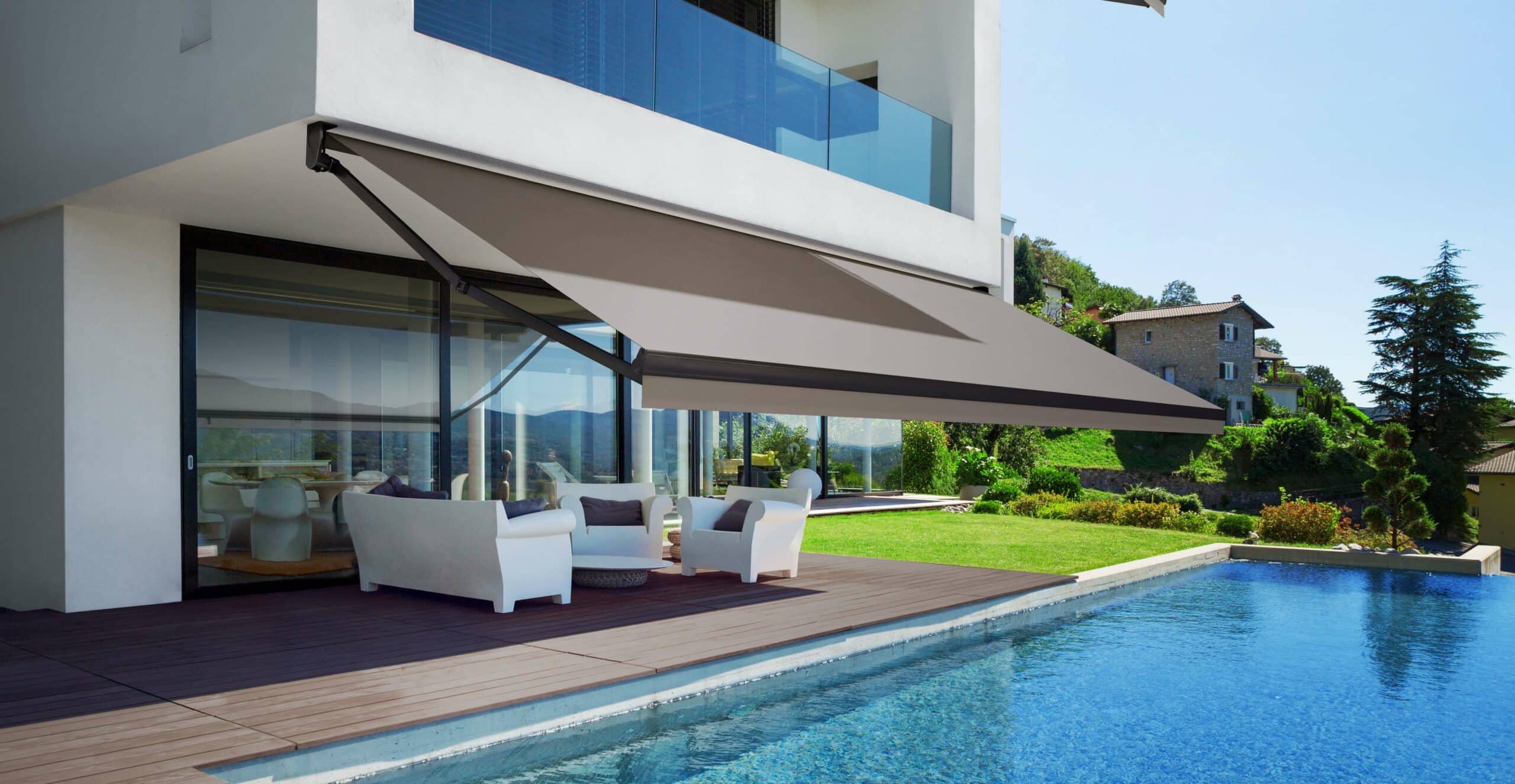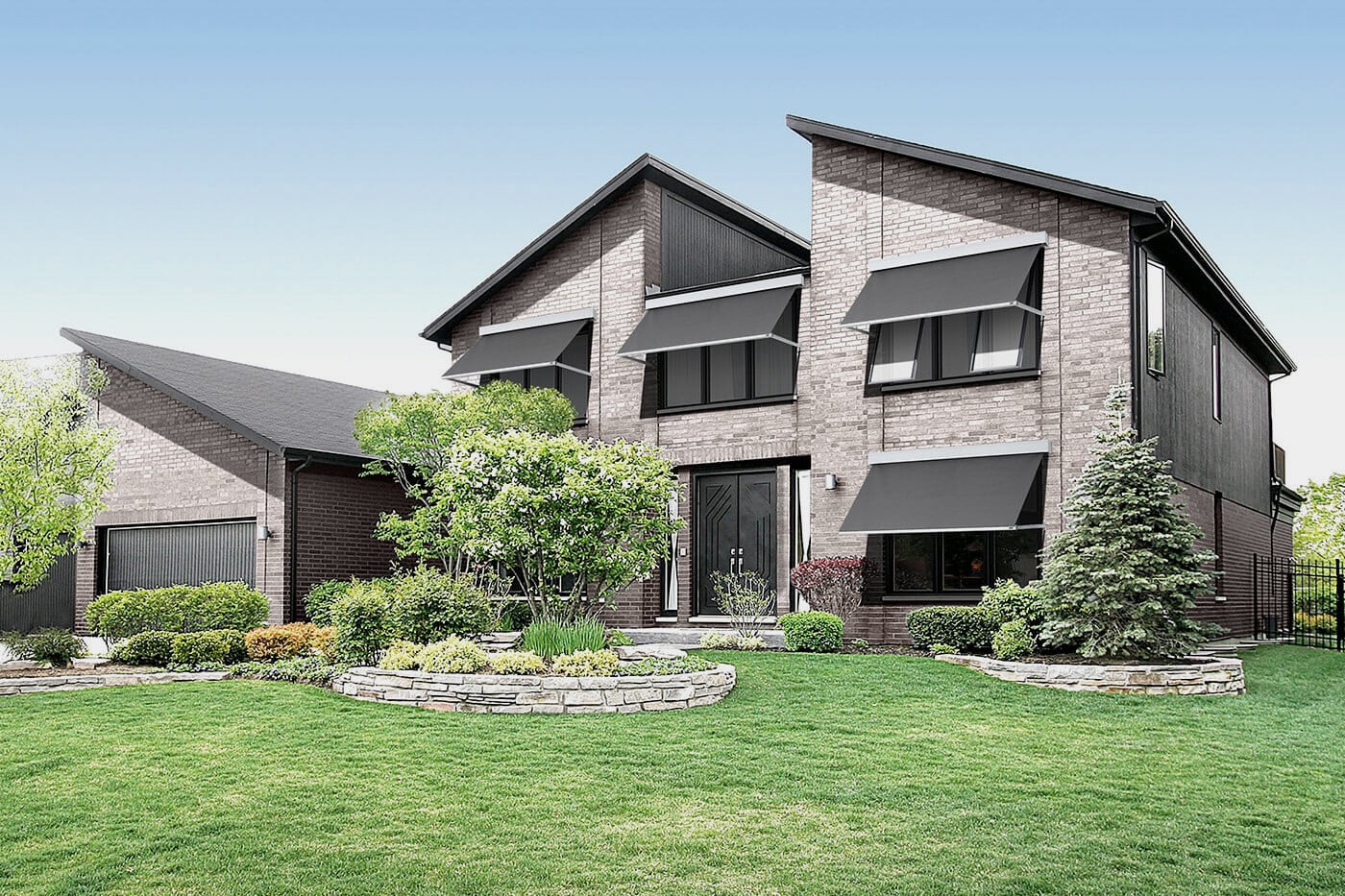As retractable Awnings become increasingly popular, here are a few Retractable Awnings FAQs that may…

Don’t Overlook The Humble Awning

For many years, dating right back to ancient times, awnings have been a prominent and functional feature on marketplaces commercial buildings and homes. We know that ancient Egyptians and Syrians suspended woven mats over the openings of doors and windows to provide shade and respite from the searing heat of the sun. Throughout their history, awnings have been an appealing and attractive way to block out the sun’s rays, rain and in some places, snow.
The Romans installed large retractable, panelled awnings at their Colosseum, stadiums and amphitheatres to provide shelter to seating areas. Over the following two millennia, awnings were used around the world with little change in their design or construction.
During the 19th century, awnings gained popularity across America and became a common feature on shop fronts after the civil war. This is when they underwent their first major changes. Prior to this era, awnings were constructed to go over fixed iron frames. When the awnings weren’t in use they were removed and rolled up, but the frames remained in place.
After the civil war, iron plumbing pipe was used instead of fixed iron frames. This innovative design also meant that awnings could become retractable. This allowed shopkeepers to adopt a more flexible approach to shading as they could now adjust the amount of coverage that the awning provided, dependent on the weather. It also meant that the awning could be fully retracted easily to protect it from wind gusts and storm damage.
These new design modifications did have their drawbacks however, as the awning was flush up against the building when it rained, moisture would pool in the folds of the fabric, accelerating deterioration. To solve this problem, a few small changes were made, roll out awnings were born. These awnings still featured fixed arms however the arms were hinged meaning they would sit flush to the building when the awning was retracted.
When the 20th century rolled around, there was a push to improve and simplify operability. New designs started appearing at this time to accommodate the wide range of shop-front configurations and styles as well. The arms were now designed to be folded either vertically or horizontally when the awning was retracted, and new ‘scissor arm’ awnings were released onto the market.
Although there had been numerous design modifications in a relatively short time, one thing that remained relatively unchanged was the type of fabric used. Canvas duck remained the common fabric used during the first half of the twentieth century before it was replaced with a vinyl plastic coating shortly after World War II. This in turn gave way to aluminium and metal coverings and although the 1950s and 60s saw an end of canvas awnings in commercial buildings, it remained the popular choice for residential architecture.
Todays roll out awnings come in a variety of sizes, shapes, fabrics and frames and are as popular as ever. View the full range of Awnings and Blinds at Complete Blinds website. Once you’ve decided to instal an awning call the awning experts, Complete Blinds on 02 8824 7975!



This Post Has 0 Comments